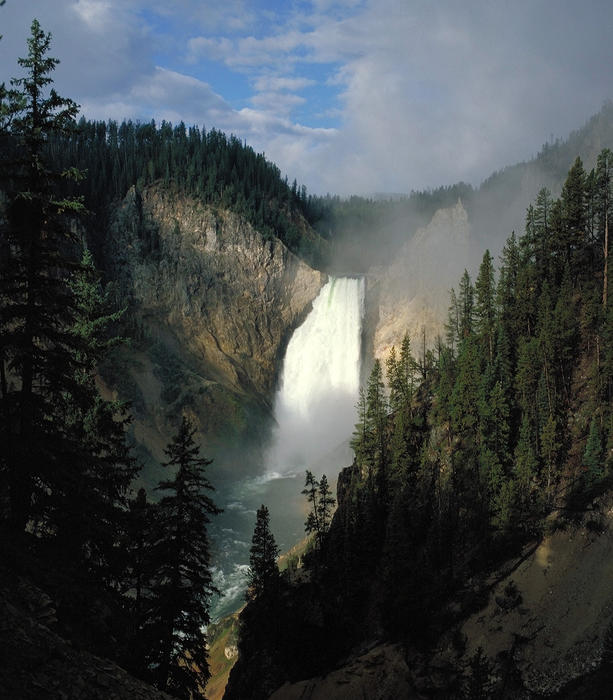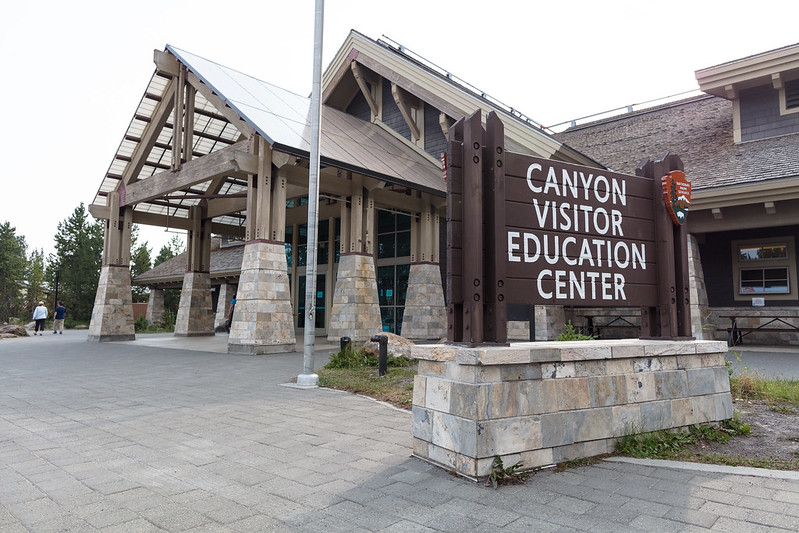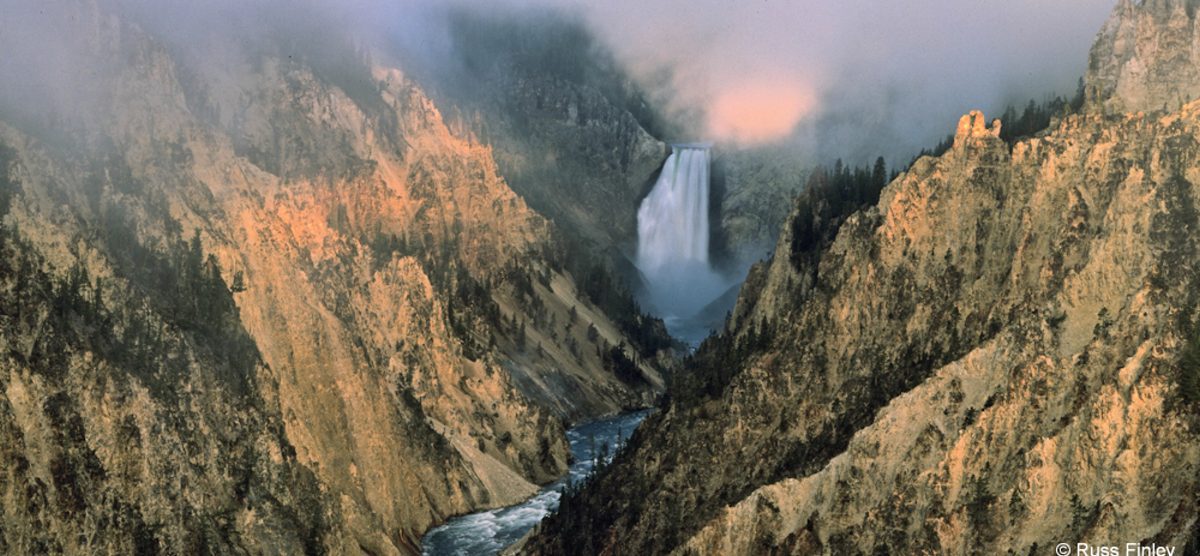2) Lower Falls and Grand Canyon of the Yellowstone – Yellowstone’s Grand Canyon may not be as big as the Grand Canyon in Arizona, but it is nonetheless breathtaking. The Lower Falls of the Grand Canyon, at 308 feet high, is one of the most photographed features in all of Yellowstone. There are numerous vantage points on both the North and South sides of the Canyon, and we recommend that you take the time to view the Canyon from both sides. Also, be certain to take the 3/8 mile (one way) hike down to the edge of the Lower Falls. The experience at the lip of the falls is breathtaking.

The Grand Canyon of the Yellowstone is the primary geologic feature in the Canyon District. It is roughly 20 miles long, measured from the Upper Falls to the Tower Fall area. Depth is 800 to 1,200 ft.; width is 1,500 to 4,000 ft. The canyon as we know it today is a very recent geologic feature. The present canyon is no more than 10,000 to 14,000 years old, although there has probably been a canyon in this location for a much longer period. The exact sequence of events in the formation of the canyon is not well understood, as there has been little field work done in the area. The few studies that are available are thought to be inaccurate. We do know that the canyon was formed by erosion rather than by glaciation. A more complete explanation can be found in the Geological Overview section. The geologic story of the canyon, its historical significance as a barrier to travel, its significance as destination/attraction, and its appearance in Native American lore and in the accounts of early explorers are all important interpretive points. The “ooh-ahh” factor is also important: its beauty and grandeur, its significance as a feature to be preserved, and the development of the national park idea.
The specifics of the geology of the canyon are not well understood, except that it is an erosional feature rather than the result of glaciation. After the caldera eruption of about 600,000 years ago, the area was covered by a series of lava flows. The area was also faulted by the doming action of the caldera before the eruption. The site of the present canyon, as well as any previous canyons, was probably the result of this faulting, which allowed erosion to proceed at an accelerated rate. The area was also covered by the glaciers that followed the volcanic activity. Glacial deposits probably filled the canyon at one time, but have since been eroded away, leaving little or no evidence of their presence.
The Canyon Village complex is part of the Mission 66 project in the park. The Visitor Center was completed in 1957, and the new lodge was open for business in the same year. Though some people consider the development representative of the architecture of the time, none of the present buildings in the complex can be considered historic. There are, however, still remnants of the old hotel, lodge, and related facilities. These constitute the cultural resources of the district.

The Canyon Visitor Center is located 1/8 mile southeast of Canyon Junction in the Canyon Village complex. The building was completed and open for public use in late summer 1957 as part of the Mission 66 project in Yellowstone. Its architecture and design are typical of other visitor centers of that era. The Canyon Visitor Center has traditionally been the location of exhibits explaining the geology of Yellowstone, but there has been no permanent exhibit here since the summer of 1990. The Fire Exhibit, now at Grant Visitor Center, was displayed here in 1991. During the 1992 and 1993 seasons, a geology exhibit designed and produced by students from Shelley, Idaho; Cody, Wyoming; and Helena, Montana, was displayed. “Imagine Yellowstone,” the children’s art exhibit, was here in 1994 and 1995, with a retrospective exhibit in 1996. In August 1997, a new exhibit on bison was installed. This exhibit is the result of a cooperative effort between Yellowstone National Park and the Buffalo Bill Historical Center in Cody, Wyoming. The exhibit deals with the natural history of bison and the bison as a symbol of wildness; it also includes information on the current controversy surrounding brucellosis. Planning for a permanent geology exhibit is underway. Audio visual programs are currently not available at the Canyon Visitor Center. The Yellowstone Association has a large book sales outlet in the lobby.
Mapped are a variety of hiking trails in the Canyon area.


3 thoughts on “Grand Canyon of the Yellowstone”
Comments are closed.